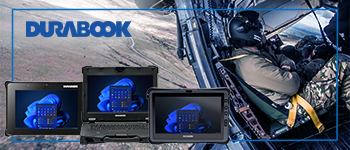Look to the skies
Elsbeth Heinzelmann explains how the Bern University of Applied Sciences has developed an algorithm to stop drones in their tracks
Drones are opening up hitherto unimagined prospects. Originally developed for combat and military surveillance purposes, they are being increasingly used in civilian applications. But in 2015, a quadrocopter spooked security forces by crashing in front of the White House in Washington, and in early 2017 security personnel in Davos grounded drones that were merrily flying over the World Economic Forum despite a flight ban. The School of Engineering at Bern University of Applied Sciences (BFH) has an efficient remedy for such cases.
In the summer of 1849, the inhabitants of Venice were shocked when Field Marshall Radetzky had paper hot-air balloons carrying bombs thrown at their city, because he could not shell the islands from the mainland. One of the bombs eventually hit the island of Murano, and the Venetians surrendered.
The inventor, Franz Freiherr von Uchatius, would doubtless rub his eyes in amazement if he knew that the successor to his paper balloons had crossed the shop counter around 450,000 times in 2014. It is rumoured that these unmanned, remote-controlled aircraft are generating sales of US$127 billion. One of the market leaders is China.
Drones appear to be all-rounders, reaching an altitude of over 2,000m, being easy to control, delivering spectacular close-up images of objects and, when it comes to flexibility, exceeding the performance of any manned aircraft. Greatly appreciated in natural disasters, they can rapidly and efficiently locate victims and promptly provide victims with food, water and medication. During the Hayan typhoon in the Philippines in 2013, they provided medical supplies; in 2016 they reached even remote areas that were difficult to access after the earthquake in Nepal; in December 2016 they got through to the inhabitants of Seif al-Dawla in Aleppo, the last area under terrorist control; and in 2017 Africa’s first permanent drone corridor, along which blood samples and vaccines are transported, opened in Malawi, thanks to UNICEF. But these unmanned aircraft can also pose a direct threat to our cities, airports and nuclear power stations. In prisons, criminals use drones for smuggling drugs, mobile phones and firearm components.
In our high-tech era, coming up with ways of defending security-critical infrastructure from constantly changing threats, particularly drones equipped with UHD (ultra-high definition) cameras and intelligent flight support, is the business of scientists at i-REX, the Institute for Risk and Extreme Value Analysis at the School of Engineering at Berne University of Applied Science. In a project supported by the Commission for Technology and Innovation (CTI) and the INVENTUS BERN Foundation, they have collaborated with COMLAB AG. They jointly developed an algorithm that detects UMTS (Universal Mobile Telecommunications System) and LTE (Long term Evolution) signals as well as current drone communication signals in adverse environments, and so defend against drones with malicious intent. The company is an expert in professional solutions for high-frequency technology, and has already been successfully involved in developing a system that detects and locates smuggled mobile phones in prisons.
But efficiently and reliably detecting specific signals under difficult conditions is not necessarily straightforward. “To avoid false alarms triggered by interference, characteristics of the useful signal are often employed to minimise the impact of the interference,” explains Bernhard Nyffenegger, Project Manager and Research Assistant at i-REX at BFH Burgdorf. “Modern communications signals often have broad bandwidths and also specific spectral shapes, and act in a cyclostationary manner. Interfering signals can be dynamic and are very powerful compared with the useful signal. Such characteristics prevent the use of conventional signal amplification algorithms. Our idea is, therefore, to use the characteristic shape of the short-term power spectral density (PSD) of modern communications signals by carrying out signal separation prior to detection by means of morphological filtering.” The PSD of the recorded signal undergoes morphological filtering using a specific structural element, making it possible to separate the useful signal from the interference and format the evidence more reliably.
“This means that morphological filtering separates the communications signals of the drones from other unwanted signals in the frequency band,” summarises Nyffenegger, an electrical engineer. “We then evaluate the drone signals, which are received simultaneously by several antennae using a modern beamforming procedure, a method of determining the position of sources in wave fields.” This tells the scientists the direction from which a signal is arriving at the antennae, therefore indicating the drone’s direction of approach. Using this information plus the isolated drone signals, they can then transmit an interfering signal to the drones quite precisely. In this way, they are able to disrupt just the drone signals without affecting or even blocking other nearby devices.
To check the robustness of the selected algorithm, the researchers tested it in the field over three days using numerous powerful narrowband interference signals. “The algorithm combines the short-term power spectral density (PSD) with morphological filters, providing a reliable method of separating powerful interference from a useful signal. It detects modern communications signals with a degree of sensitivity greater than 98.2 percent and a false alarm rate of less than 0.8 percent.” The researchers also tested the visibility conditions in a sparsely populated urban area, and were able to detect drones from a distance of up to 2km.
A clear distinction should be made between detection and defence. For detection and tracking purposes, it is not necessary to transmit signals. So the system does not cause any interference for WLANs or other sources. That means the detection and tracking system can be used virtually anywhere. This is not the case for the system with integrated defence, as this variant transmits interference signals. They disrupt the drones, but possibly also other sources. In certain sensitive locations, this is simply unacceptable. Using alternative defence mechanisms is not out of the question. One could imagine drones that pursue and then ground other drones that have been detected.
Bernhard Nyffenegger outlines the following aim in his defence strategy: “We transmit precisely the same signals that we receive from the flying object. We target these at the drone, but only when it is transmitting.” The resulting defence system is selective in terms of frequency, direction and timing. “Using it, you can efficiently disrupt a drone with minimal power. Thanks to the fact that the signal transmitted is minimal in terms of frequency, direction and timing, interference for other sources is virtually nil, meaning the defence system can even be used in locations with lots of other sources.”
Today, drones are not prohibitively expensive for interested amateurs, a simple device can be rented for around £15 per day. Although he’s an advocate of sharing, Bernhard Nyffenegger cautions that “It’s essentially a good thing, but it’s problematic that people with no experience of drones can cause quite a lot of damage in this way at little cost. But since owners need to be registered on the portal, their names are known – which makes sense, particularly for investigations if there’s an accident.” Transporting goods by drone is another possible use, as they can currently carry payloads of up to 30kg. In January 2017, the Consumer Electronics Show in Las Vegas displayed a security drone for use in a networked living room and garden. It transports small objects, automatically flying to the wireless charging station on the ground for this purpose. In March 2017, the Federal Office of Civil Aviation (FOCA) authorised drone flights between two hospitals in Ticino. Further testing is scheduled, but there are plans for the regular use of multicopters in 2018.
There is also future potential for VTOL (vertical take-off and landing) drones, which do not require a runway. Since such drones are extremely manoeuvrable and require little space for take-off and landing, they are suitable for monitoring the moisture content of land for large-scale farming in places such as the USA and South America. Another interesting possibility is checking the functioning of photovoltaic systems. If you add hydrogen as a power source, VTOL drones can be used for six hours, so they are ideally suited for covering large distances in developing countries.
However, the development of more powerful drones means above all that the fundamental legal principles will have to be fleshed out. In Switzerland, this is the task of FOCA. But first and foremost, we need to ensure that the guidelines that are issued are adhered to, and contraventions are appropriately penalised.
Elsbeth Heinzelmann studied psychology and journalism in Germany before founding a company for communication consulting in Switzerland. She now presents scientific and technical issues in national and international articles.









